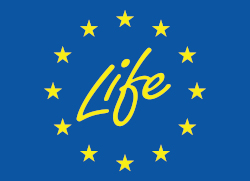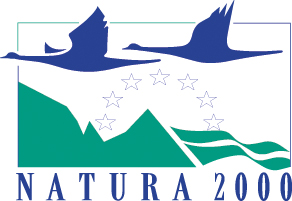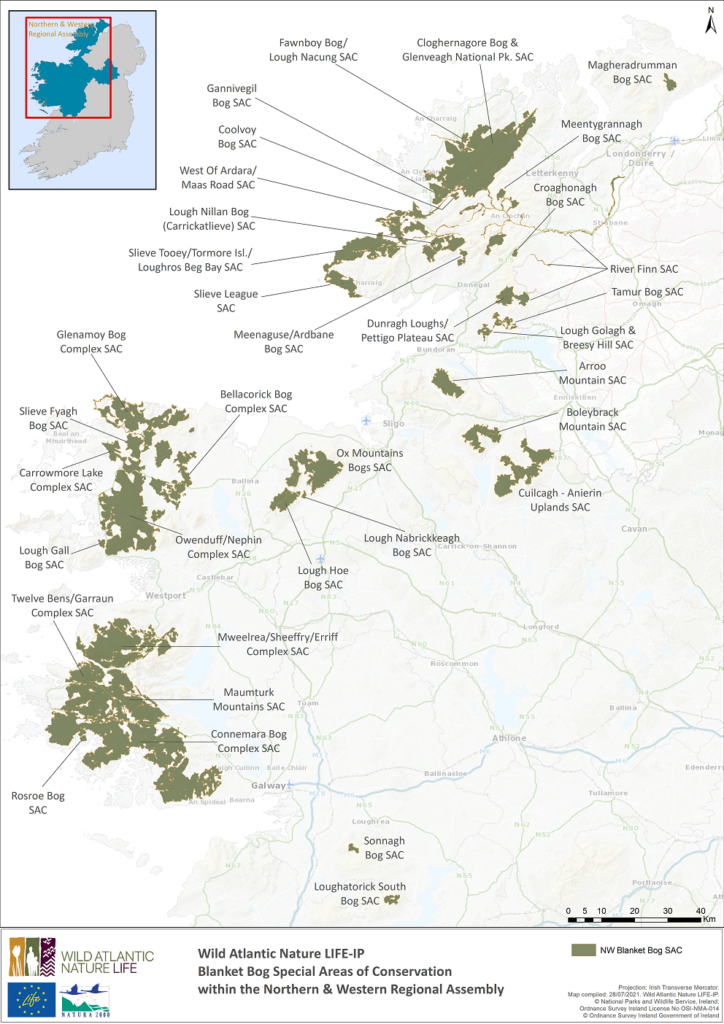What is the Natura 2000 Network?


Stretching across 27 EU countries, Natura 2000 is the largest network of protected sites globally, covering over 18% of land area within the EU and more than 8% of marine territory. These protected areas represent Europe’s most valuable habitats, protected in their own right, as well as sites important for threatened species. The purpose of the network is to ensure long-term survival of Europe’s 230 rare and threatened habitats and 2,000 species as outlined in the EU Habitats and Birds Directive. Special Areas of Conservation (SAC) and Special Protection Areas (SPA) are collectively referred to as the Natura 2000 Network.
The Natura 2000 network differs to other nature conservation areas such as strict nature reserves; human activities are not excluded and the majority of the land remains privately owned. Sustainable use of lands is accepted for the management of sites, whereby people work with nature rather than against it, with benefits for both ecology and economy.
What is a Special Area of Conservation (SAC)?
Special Areas of Conservation (SACs) are sites designated by Member States under the EU Habitats Directive. This Directive lists habitats and species to be protected due to their importance within the EU and Ireland. Habitats listed include raised bogs, blanket bogs, heathlands, sand dunes, machair, rivers, lakes, estuaries, bays and woodlands. 25 species are listed, which include Marsh Fritillary (butterfly), Lesser Horseshoe Bat, Otter, Seals (Harbour and Grey), Bottlenose Dolphin, Kerry Slug, Freshwater Pearl Mussel, Marsh Saxifrage (plant), Slender Naiad (aquatic plant), Atlantic Salmon and Killarney Fern. In Ireland there are over 400 SACscovering an area of approximately 13,500 km2, made up of 53% land and the remaining comprised of aquatic habitats (marine areas or large lakes). EU wide there are 12,600 sites covering approximately 420,000 km2
What is a Special Protection Area (SPA)?
Special Protection Areas (SPA) are also part of the Natura 2000 Network. SPA have been designated for the protection of rare and vulnerable species listed in the EU Birds Directive and for regularly occurring migratory species. Wetlands of international importance have also been designated as SPA. Ireland’s network of 165 SPA cover 5,970 km2 of terrestrial and marine habitats. SPA are comprised of both privately and publicly owned lands, with lands in agriculture representing a share of the network. SPA range from upland areas where landscape features such as hedgerows, grasslands and scrub present feeding and breeding opportunities for species such as Hen Harrier and intensively farmed reclaimed wetlands by our coasts (polder lands protected by embankments/dykes), which support significant numbers of overwintering geese and swans.
Ireland has important breeding and feeding grounds for both winter and summer migrants, as well as our year round residents. Terrestrial sites include inland wetland areas important for wintering water birds, as well as foraging and breeding habitats on blanket bog and in upland areas. Ireland plays an important role for over 50 species of migrating water birds, that either passage through or overwinter here. Significant numbers of some bird populations, such as Whooper Swan and Greenland White-fronted Goose, spend winters utilising Ireland’s important wetland ecosystems. 24 species of seabirds spend summers in Ireland, with Ireland being especially important for breeding populations of Manx Shearwater and Storm Petrel. Our uplands and blanket bogs provide resources for breeding Merlin and Golden Plover in the summer months. Coastal habitats, such as Machair, are important feeding and breeding grounds for Chough, Dunlin and Lapwing.
What is a blanket bog?
Blanket bogs are types of peatlands* that occur in cool, wet, oceanic climates. A minimum annual rainfall of 1250mm is required over at least 225 days of the year. A high and stable water table is also necessary, so these bogs are generally found on flat or gently sloping lands that are poorly drained that has allowed peat to accumulate. Blanket bogs are defined as having a peat accumulation of at least 50cm with peat depths averaging 3m, although deeper peats are also possible. Blanket bog formation started as early as 7,000 years ago in Ireland, but it is believed that the majority of our peatlands originally started forming about 4,000 years ago when climate change lead to an increase in rainfall. With a growth rate on average of 0.1cm a year, peat accumulation is a slow process making bogs vulnerable to human impacts such as turf cutting, burning and drainage.
Although in Ireland, we may see blanket bogs as common, globally they are rare. Ireland possesses 8% of the world’s blanket bog and is the most important country in the EU for this type of habitat.
* Peatlands are terrestrial wetland ecosystems where waterlogged and anaerobic (absence of oxygen) conditions prevent plant material from fully decomposing and the production of organic matter exceeds its decomposition resulting in a net accumulation of peat. So peat is an accumulation of semi-decayed plant material. In cool climates such as Ireland, peatland vegetation is generally made up of Sphagnum mosses, sedges and shrubs, which are the primary peat builders.
What is a habitat?
A habitat is a place where an organism (animal or plant) naturally occurs/lives or grows. A habitat provides all the resources that an organism needs to survive e.g. food and shelter.
What is biodiversity?
The term biodiversity has been derived from the phrase ‘biological diversity’, which refers to the variety of all living things on Earth at various levels from ecosystems and habitats to individual species and their genetic make-up. Biodiversity encompasses ecological, evolutionary and cultural processes that support living things.

